Tarot cards, a paragon of mystique and divination, have traversed the annals of time, offering insights into both the mundane and the esoteric. Each card, a vestige of archetypal imagery and symbolic depth, reveals a narrative that resonates with the universal human experience. This exploration envelops the intricate tapestry of all Tarot cards and their meanings, weaving together a guide to understanding their profound symbolism.
The Structure of the Tarot Deck
The Tarot is segmented into two primary components: the Major Arcana and the Minor Arcana. The Major Arcana comprises 22 cards, each brimming with profound significance, acting as signposts on the journey of life. In contrast, the Minor Arcana, composed of 56 cards, offers insights into the day-to-day events that color our existence. The Minor Arcana further divides into four suits—Cups, Wands, Swords, and Pentacles—akin to the four classical elements that govern our world.
Major Arcana: The Pivotal Journey
The cards of the Major Arcana delineate pivotal moments and archetypes, echoing through the corridors of human experience. Each card is a narrative unto itself, encapsulating both lessons and destinies.
- The Fool (0): Embodies new beginnings and adventures, inviting spontaneity and exploration. This card signifies a leap of faith.
- The Magician (I): Represents resourcefulness and power, the ability to manifest dreams into reality utilizing the tools at one’s disposal.
- The High Priestess (II): Symbolizes intuition, mystery, and the subconscious mind. She encourages the seeker to delve into their inner world.
- The Empress (III): Signifies fertility, abundance, and nurturing. Mother Earth is a vital metaphor here, emphasizing growth and sensuality.
- The Emperor (IV): Symbolizes structure, authority, and control. He represents the disciplined approach required to create stability in life.
- The Hierophant (V): Represents tradition and spiritual wisdom, urging adherence to faith and societal norms.
- The Lovers (VI): A card of relationships and decisions, tapping into the duality of love and the choices that come with it.
- The Chariot (VII): Represents triumph through determination and mastery over opposing forces, signifying willpower and direction.
- Strength (VIII): Embodies courage and compassion. It’s an encouragement to embrace inner strength in the face of adversity.
- The Hermit (IX): Symbolizes introspection and solitude, a journey inward to discover inner truths.
- Wheel of Fortune (X): Represents cycles, fate, and the ebb and flow of fortune, urging acceptance of life’s temporal nature.
- Justice (XI): Signifies fairness and truth, highlighting the importance of accountability and moral integrity.
- The Hanged Man (XII): Represents surrender and new perspectives, suggesting that letting go can yield profound insights.
- Death (XIII): Not a grim harbinger but a card of transformation, representing endings that lead to new beginnings.
- Temperance (XIV): Embodies balance and moderation, a reminder that harmony comes from integrating diverse aspects of life.
- The Devil (XV): Symbolizes bondage and temptation, urging the seeker to confront their darkest fears and dependencies.
- The Tower (XVI): Represents upheaval and revelation, illuminating the destruction of false beliefs to make way for enlightenment.
- The Star (XVII): Signifies hope and inspiration, a beacon of light amid despair, encouraging faith in the future.
- The Moon (XVIII): Resides in the realm of intuition, illusions, and the unconscious. It encourages exploration of the mysterious.
- The Sun (XIX): Represents joy, success, and vitality, illuminating positive outcomes and fruitful beginnings.
- Judgment (XX): A call to self-reflection and reckoning, suggesting rebirth and the inner awakening of true potential.
- The World (XXI): Represents completion and fulfillment, a triumphant celebration of one’s journey and accomplishments.
Minor Arcana: The Daily Threads of Existence
The Minor Arcana weaves the more tangible experiences of daily life, comprising four suits, each with its own narrative lexicon.
Cups: Govern emotions, relationships, and connections. They delve into the fluid realms of love, intuitive experiences, and creative pursuits.
- Ace of Cups: Signifies new beginnings in emotional matters, a wellspring of love.
- Two of Cups: Represents partnership and mutual respect, a harmonious connection in relationships.
Wands: Reside in the domain of ambition, creativity, and action. They encourage proactive engagement with one’s aspirations.
- Ace of Wands: A harbinger of new ventures, brimming with potential and inspiration.
- Three of Wands: Symbolizes exploration and foresight, a broadened horizon where plans mature.
Swords: Represent intellect, conflict, and challenges. They force the seeker to confront difficulties with clarity and resolve.
- Ace of Swords: Embodies truth and clarity, heralding the arrival of insights.
- Five of Swords: Captures the essence of conflict and defeat, urging caution in confrontations.
Pentacles: Symbolize material wealth and security, connecting the spiritual to tangible reality through financial and physical wellness.
- Ace of Pentacles: Represents new opportunities in the material realm, prosperity on the horizon.
- Four of Pentacles: A cautionary tale of possession and control, reflecting the importance of financial wisdom.
In conclusion, the Tarot is not simply a deck of cards but a rich tapestry woven from human experiences. The card meanings resonate like echoes in a vast canyon, reminding us of our collective journey. Each card, whether in the Major or Minor Arcana, beckons us to explore the depths of our psyche and our relationships with the world. Engaging with Tarot invites us to embrace both the light and shadow of our existence, offering insights that can lead to profound transformation and understanding. In its myriad forms and interpretations, the Tarot stands as a testament to the power of symbols in our quest for meaning and connection.

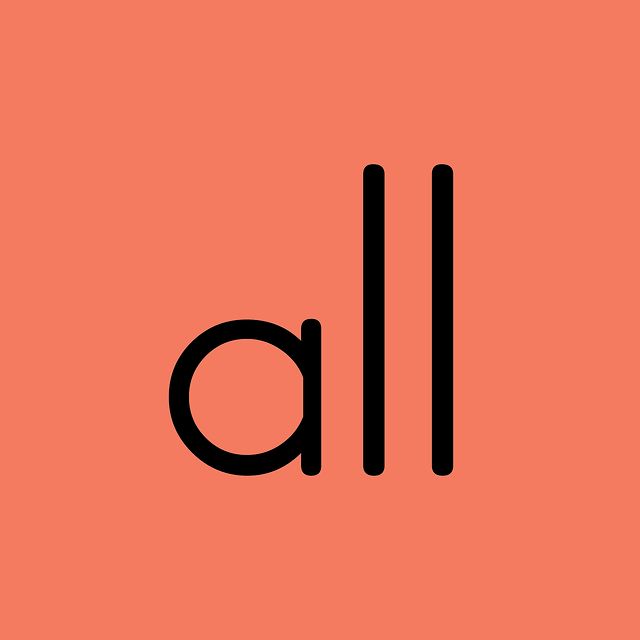

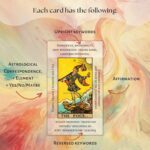
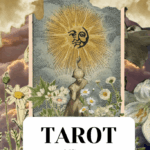
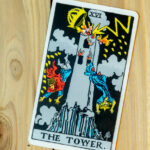
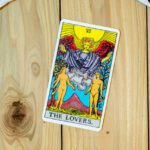



Leave a Comment